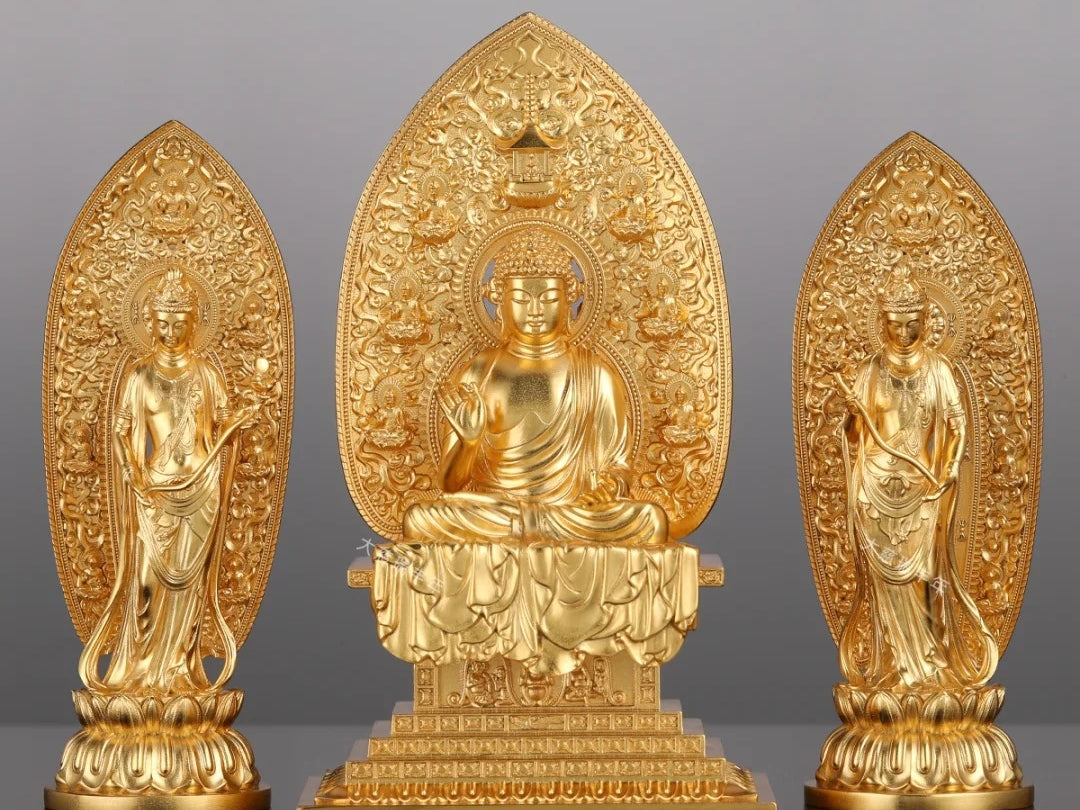Tibetan jewelry is an exquisite reflection of Tibetan culture, spirituality, and craftsmanship. These adornments, often crafted using natural gemstones, animal bones, and metals like Tibetan silver and brass, carry profound spiritual and cultural significance. Tibetan jewelry embodies the deep connection between art and the sacred traditions of Tibetan Buddhism.

The Essence of Tibetan Jewelry
Tibetan jewelry is more than just a fashion statement; it's a reflection of the Tibetan people's nomadic past and their deep-rooted spiritual beliefs. Handcrafted with natural materials, these pieces often symbolize protection, luck, and religious devotion. Buddha pendants and other Buddhist Jewelry items carry profound meanings in Tibetan culture, serving as more than just adornments.

Key Materials in Tibetan Jewelry
The materials used in Tibetan jewelry are as diverse as the natural landscape of Tibet itself. Bone, silver, Tibetan silver, three-colored copper, agate, turquoise, amber, coral, and shells are all integral to creating the distinctive pieces that have come to define Tibetan jewelry. These materials are chosen not only for their aesthetic appeal but also for their symbolic meanings and spiritual significance.

The Mysticism of DZI Beads
Among the most enigmatic and revered items in Tibetan jewelry are the DZI beads. These beads, made from agate mined at high altitudes in the Himalayas, are believed to possess supernatural powers. They are thought to ward off evil and bring good fortune, making them highly prized Buddha pendants and protective amulets.

The Power of Metal: Sky Iron
Sky Iron is another significant component of Tibetan jewelry, often crafted from gold, silver, iron, or alloys. These metal ornaments are believed to have the power to repel negative energies and protect the wearer from harm. They are considered sacred and are often associated with ancient family crests and symbols, adding a layer of historical depth to their appeal.

Ga Wu Box: A Testament to Tibetan Craftsmanship
The Ga Wu Box is a metal box, sometimes adorned with semi-precious stones like turquoise and coral. It is a symbol of Tibetan craftsmanship and is often worn as a protective amulet. These boxes, which can be made from gold, silver, copper, or tin, are not only beautiful but also serve as containers for sacred items, such as images of deities or relics from religious figures.

Nine Palaces Bagua Amulet
The Nine Palaces Bagua Amulet is a talismanic plate that represents the integration of Tibetan, Chinese, and Indian cultures. It features the twelve zodiac animals, the Bagua (Eight Trigrams), and the nine palaces, symbolizing protection and harmony. This piece is a testament to the cultural exchange and spiritual practices that have shaped Tibetan Buddhism.

Turquoise: A Stone of Heaven
Turquoise is a stone that is ubiquitous in Tibetan jewelry, symbolizing the elements of sky, water, and air. It is considered a divine stone, often used to adorn Buddhist statues and believed to bring safety and good fortune. Turquoise holds a place of reverence in Tibetan culture, embodying the spiritual connection to the natural world.

Amber: A Glimpse into the Past
Amber, or fossilized resin, is another gemstone that holds a special place in Tibetan jewelry. It is cherished for its beauty and believed to have spiritual powers. Amber is often used in Buddhist rosaries and is thought to protect against negative energies, making it a popular choice for Buddha pendants and other religious jewelry.

Coral: A Symbol of Life and Energy
Red coral is a precious gemstone that is highly valued in Tibetan culture. It is used to create beads for Buddhist malas and as an adornment for religious statues. Coral is believed to be a symbol of life and energy, and it is often worn during significant festivals and events as a sign of prosperity and protection.
Conclusion
Tibetan jewelry is a cultural treasure trove, rich with history, spirituality, and artistry. Each piece, from Buddha pendants to intricate beads, tells a story of the Tibetan people's connection to their land, their faith, and their traditions. Understanding the significance of these pieces offers a glimpse into the heart of Tibetan culture and the enduring beauty of their artistic expressions. It's more than just jewelry; it's a living legacy of a people's spirit and their reverence for the sacred.



